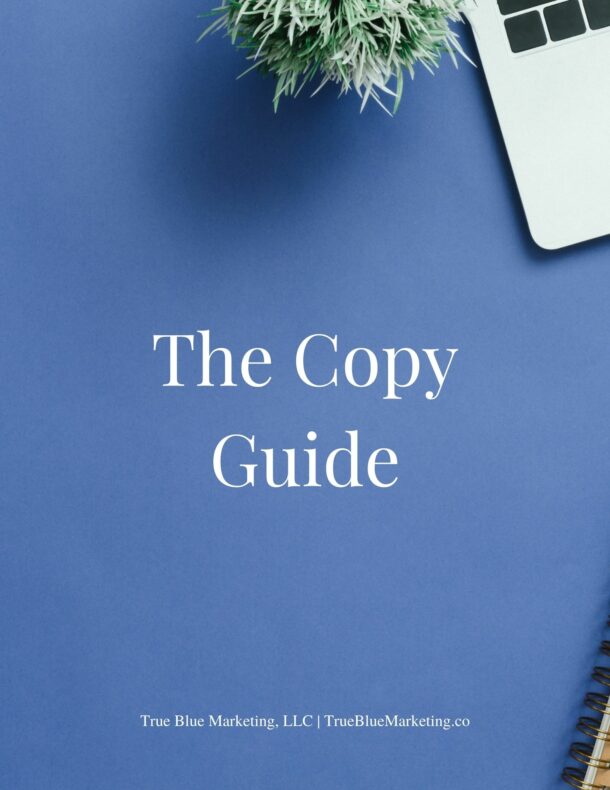
If you’ve wondered how to share enough details about your services to entice someone to work with you, this post is for you. We’re going to dive into what you absolutely need to include in your sales copy and what’s best left out.
I’ve developed some of the following preferences over years of working with small business owners, and some are standard practices across online businesses. I’ll elaborate on each item about whether it is standard practice or what I include when working with clients.
My Always Share Items
Results: At the very top of my Always Share list are the results your ideal clients want and how they align with what to expect from ty our offer or package of services. Every person reading a sales page will want to know that you understand the results they want and that you can get that result/results for them. Without speaking directly to the results they want, you’ll lose their interest.
Some online businesses like to hint at results rather than face the expectation head-on. I prefer to create copy that is the latter and is as accurate as possible with what to expect for results while also sharing a deep understanding of the expectation.
Offer Details: Anyone considering working with you will want to know what’s included in the offer from the number of sessions to whether they can get support from you in between; outline what they can expect from you in the offer.
Including offer details on a sales page is pretty standard for successful online businesses. If a business isn’t sharing exactly what is included in an offer, they can expect a lower conversion rate even if some prospects ask about the offer details.
Client Responsibilities: I always encourage sharing what to expect for responsibilities for all parties involved in an offer for a few reasons.
- The new client will know what to expect from you within the boundaries of the offer, and you can refer to this if your client wants to add more time, sessions, or other work.
- Your clients will see from the beginning that they have to take action if they want to get results. Their participation is essential in nearly every offer for an online business.
I’ve known businesses that do not state client responsibilities upfront, which can leave clients unsatisfied when they realize how much work they’ll need to do to get results.
How to Start: Elminiate hesitations around buying by sharing a simple outline of what to expect to get started. The more exact copy is within this section, the better, so give them steps one, two, and three. They’ll get the next steps in our automated emails after paying and scheduling a session with you. Often step one is to schedule the first session, step two is to pay, and step three is to complete an intake form either within the online scheduler or from a link in the automated welcome email.
There are different opinions on this one in the online business industry: some businesses like to have just one step outlined on the sales page (a Start Here type of button), while others prefer to let prospects know what to expect. I’ve found better conversation rates happen when people know what to expect.
Pricing: There are a few different opinions about this in online business. Some businesses say never to include pricing on a sales page, while others say to include it in just one place, and still, others say to post it in multiple places on the sales page. My preference has always been to include pricing at the bottom of the page, just after the offer details and before listing any testimonials.
My Do Not Share Items
Now, for the items that I typically do not include in sales page copy. Most of the details below cover information they do not need to know before deciding to work with you OR information they do not necessarily care to know, so having it on the sales page can distract them from buying from you.
Process: From the process you’ll take your ideal clients through within the offer to the minute-by-minute steps of each session, most clients will not need to know this before they buy. Many will not care about why the process works, where you learned the process, or even the name of the process. What they’ll care about is whether it will work for them to get the results they want.
Why It Will Work: Similar to the process, they probably will not need to know or care to know why the methods you’ll use will work. They’ll want to know if you can get them to the result they want.
Your Training: Most clients are not looking for someone with one or another type of training to get the results they want. Just as with the process and why it will work, this isn’t usually a detail that matters to them when they consider whether to work with you. They also will not need to know what you do to prepare for a session unless it involves them. So if they need to complete an intake form, do a meditation, or complete an onboarding process before meeting with you, I’ve found it best to let them know about it ahead of time.
Exceptions
There are, of course, businesses that are exceptions to this list. If you must have certain degrees or certifications to provide your service or to show legal coverage, then by all means, include that on your sales page.
In short, I always encourage copy on a sales page and elsewhere to include information that shows an understanding of your ideal clients and is accurate to the services you provide. The best sales copy covers this set of goals while also illustrating that you are the expert they want.





